Photos: TMU's Red Dress Day exhibits shine light on national issue
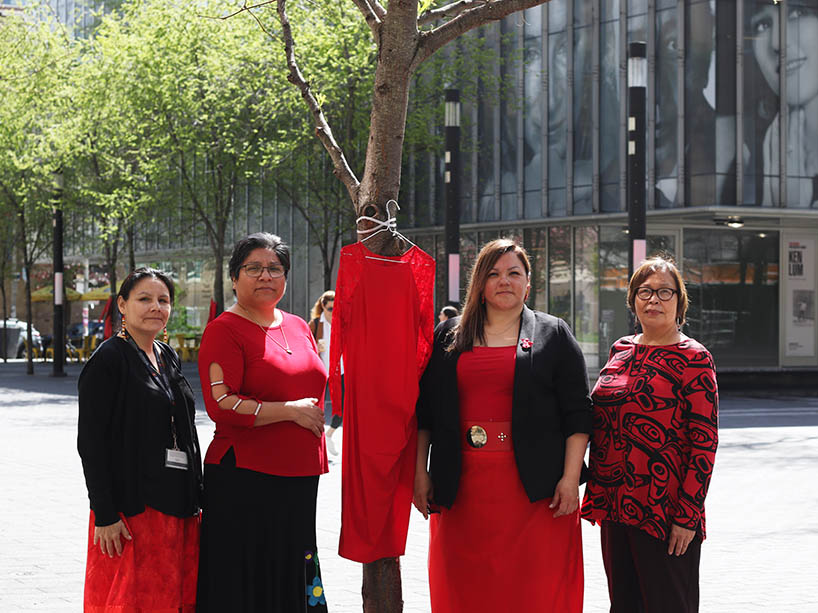
Four Indigenous women staff members at TMU led the work to bring together the campaign and exhibits to honour Red Dress Day. Many other staff and partners supported this work. Pictured from left: Cher Trudeau, administrative coordinator, Indigenous Education Council and Indigenous Initiatives; Amy Desjarlais, lead, Rebirthed Teachings, Indigenous Initiatives; Crystal Osawamick, manager, Indigenous events and special projects, University Events and Ceremonies; and Monica McKay, director, Indigenous Initiatives. All photos by the Office of the Vice-President, Equity and Community Inclusion (OVPECI).
Strolling down Gould street on May 5 and 6, you couldn't miss the striking sight of red dresses swaying in the breeze among the branches. But do you know the powerful message they carried?
May 5 marks Red Dress Day, also known as the National Day of Awareness for Missing and Murdered Indigenous Women and Girls and Two-Spirit People (MMIWG2S). On this day, we honour the memory of Indigenous women, girls and two-spirit individuals who have gone missing or have been found murdered in communities across Canada and Turtle Island. Many cases remain unresolved.
The historic and current rate of violence against Indigenous women, girls and two-spirit people is a national tragedy that cannot be ignored. Urgent action is required to address the root causes of violence against Indigenous Peoples. All people deserve to live in safety, free of violence and abuse.
In 2019, Reclaiming Power and Place: The Final Report of the National Inquiry into Missing and Murdered Indigenous Women and Girls (external link) was published, including 231 individual calls for justice directed at governments, institutions, social service providers, industries and all Canadians.
At TMU, we are raising awareness about Red Dress Day and MMIWG2S while responding to the calls for justice directed at educators (calls for justice 11.1 and 11.2).
This year, TMU honoured Red Dress Day | Msko-mjigoodenh Giizhigad with an e-campaign that invited community members to learn more and get involved, a micro gallery in the TMU Libraries and an outdoor exhibit on Gould street. See photos from the events below.
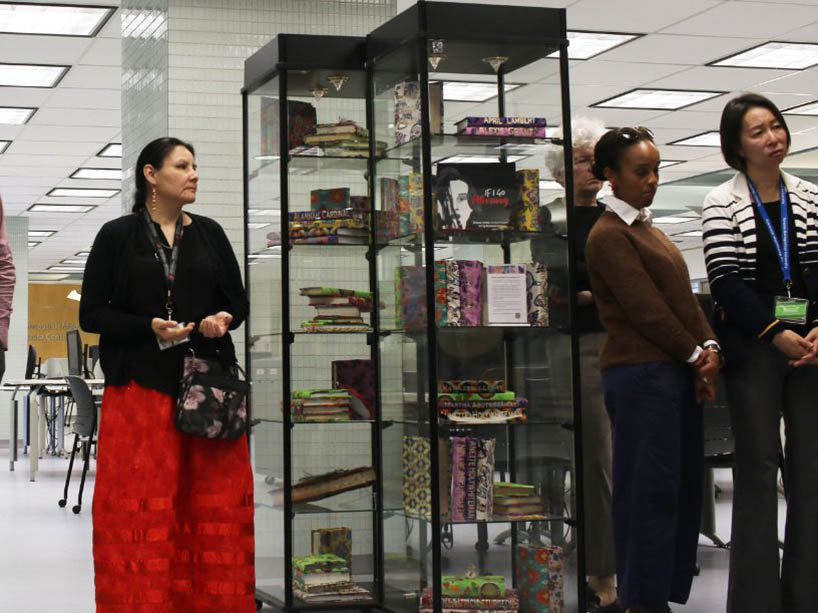
To begin the day’s events, TMU Libraries unveiled the micro gallery, which acts as a memorial to all MMIWGM2S. The gallery, located on the main floor of the main library, comprised books wrapped with fabric sourced from Indigenous vendors. The installation is part of The Canadian Library project to respect and honour the thousands of missing and murdered Indigenous women, girls, men and two-spirit people.
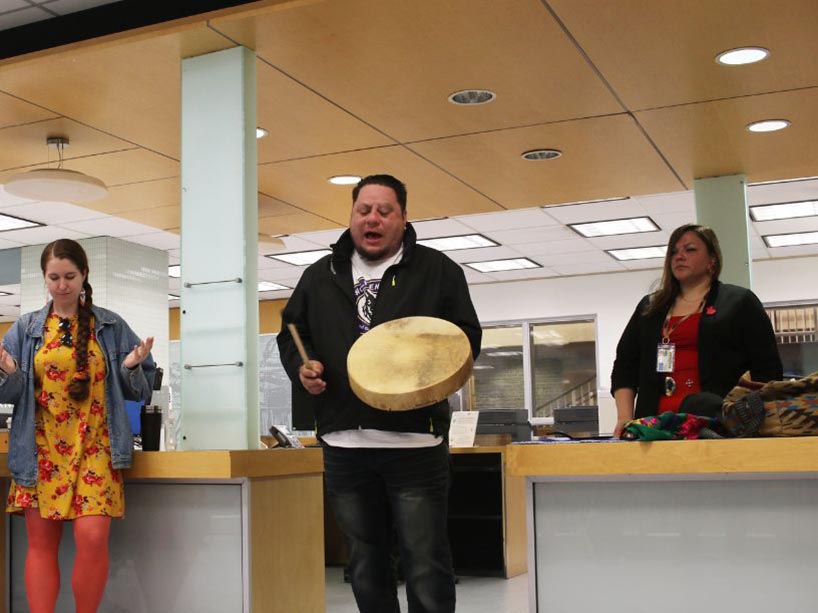
Wayne Moberly (centre) opened the micro gallery exhibit with an honour song. Crystal Osawamick (right), noted the importance of balance and included men on this day to raise awareness and honour the many men that have also gone missing and been murdered.
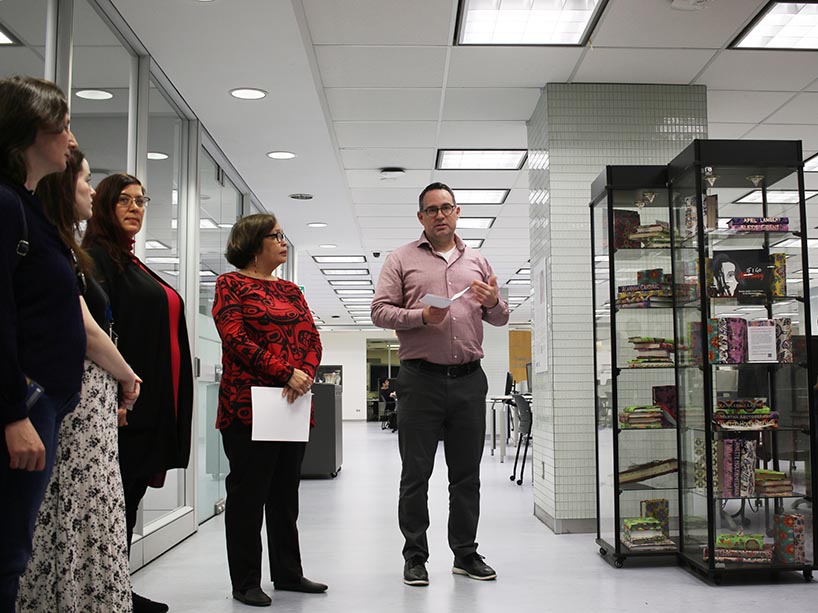
TMU leaders and the event organizers provided welcome remarks. Speakers included Monica McKay (centre-left), director of the Indigenous Initiatives unit in the OVPECI as well as the dean of Libraries, Mark Robertson (centre).
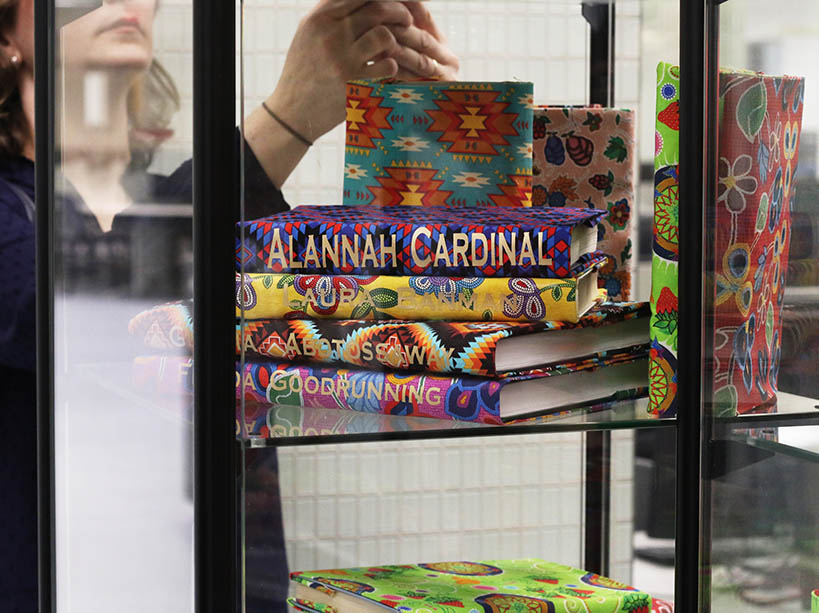
The books in the micro gallery were wrapped by students, staff and librarians during book wrapping events in March at the Libraries’ Digital Media Experience Lab. Some of the books were marked with the names of missing and murdered Indigenous women and girls printed in gold on the spine.
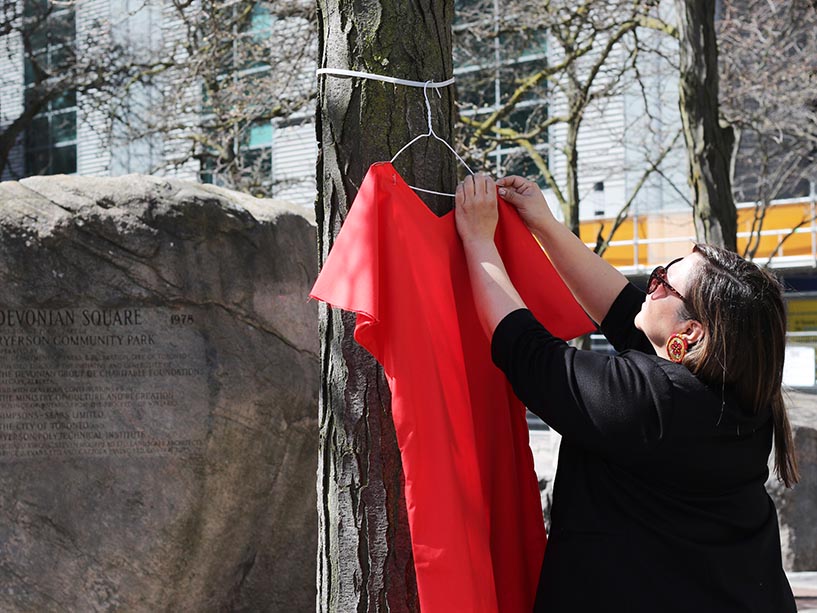
Zhinoomaagewin, in anishinaabemowin (Ojibway/Odawa) language, means a showing. As part of the outdoor exhibit at TMU, red dresses were hung in trees along Gould street. Crystal Osawamick (right), organized and led the installation. She smudged the dresses before hanging them with care and concluded the exhibit with a small feast offering of berries, water and tobacco. The displaying of red dresses in public spaces began in 2010 when Métis artist Jamie Black launched the REDress Project (external link) . The dresses symbolize the absence of Indigenous women and girls who have gone missing or have been murdered and aim to raise awareness about this pressing issue.
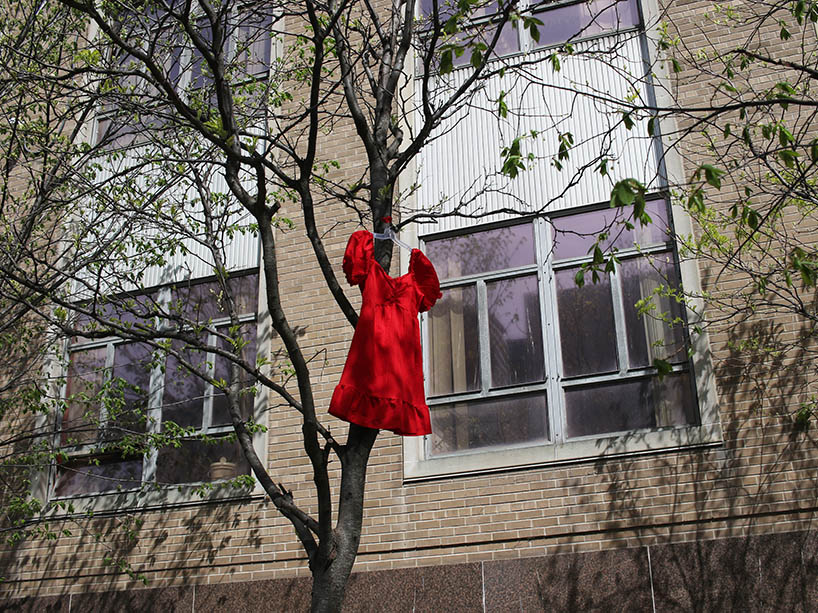
The exhibit of red dresses strung along Gould street was a visible reminder of the targeted crimes against Indigenous women, girls and two-spirit people.
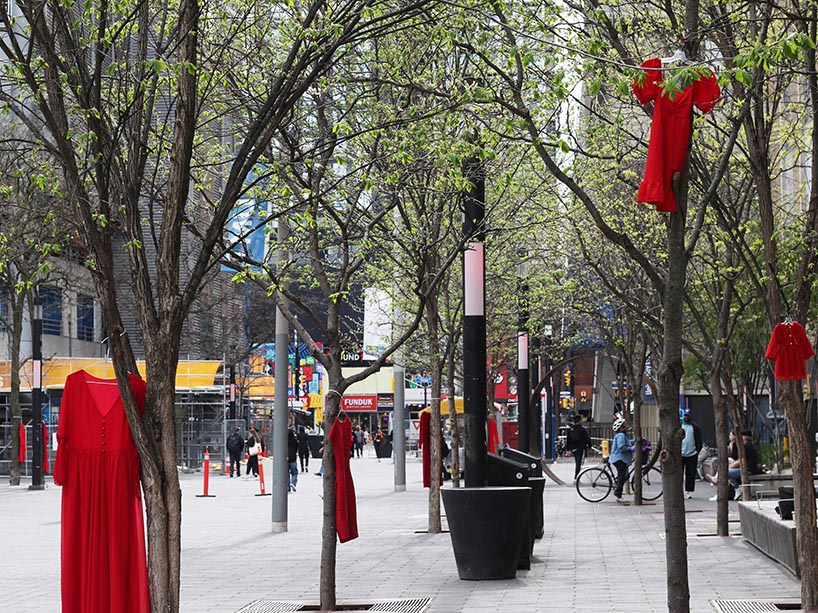
The word ‘redress’ means to remedy or set right. The display of red dresses in public spaces is meant not just as a memorial for MMIWG2S, but as a call to action (Native Women’s Association of Canada).
Further educate yourself about MMIWG2S
MMIWG2S should not only be remembered and honoured on May 5. The TMU community is encouraged to educate yourself by delving into accurate sources about MMWIG2S. Suggested resources to explore:
- AJ+ | Canada's missing and murdered Indigenous women (external link)
- Assembly of First Nations | Explore MMIWG (external link)
- Brianna Olson-Pitawanakwat and Cyndy Baskin | In Between the Missing and Murdered: The Need for Indigenous-Led Responses to Trafficking (external link)
- CBC Kids | Red Dress Day: What it is and how it began (external link)
- Courtney Skye | Yellowhead Institute: Can the Missing and Murdered Indigenous Women and Girl’s Inquiry be Reclaimed? (external link)
- Pamela Palmater | Series of 13 educational videos to help you understand the Missing and Murdered Indigenous Women and Girls National Inquiry (external link)
- KAIROS Canada | Missing and Murdered Indigenous Women Advocacy and Action (external link)
- Jamie Black | The REDress Project (external link)
- National Inquiry into Missing and Murdered Indigenous Women and Girls | Reclaiming Power and Place: The Final Report of the National Inquiry into Missing and Murdered Indigenous Women and Girls (external link)
- National Museum of the American Indian | The REDress Project (external link)
- Native Women's Association of Canada | MMIWG2S+ and Violence Prevention (external link)
- Native Women's Association of Canada | (PDF file) Building on the legacy of the NWAC Faceless Doll Project - Create your own Faceless Dolls (external link)
- Nickita Longman | Yellowhead Institute: MMIWG2S+ and the Failure of Policing (external link)
- Shades of Our Sisters | Online exhibit (external link)
The resources above were compiled as part of the Red Dress Day e-campaign developed by members of the Rebirthed Teachings Community Learning Circles, in partnership with the Centre for Excellence in Learning and Teaching (CELT), Indigenous Initiatives in the Office of the Vice-President, Equity and Community Inclusion, TMU Libraries and the President’s Office.
Donate a red dress
We are accepting donations of red dresses for next year’s red dress exhibit on Monday, May 5, 2025. Please email Crystal Osawamick, manager, Indigenous events and special projects at crystal.osawamick@torontomu.ca.





